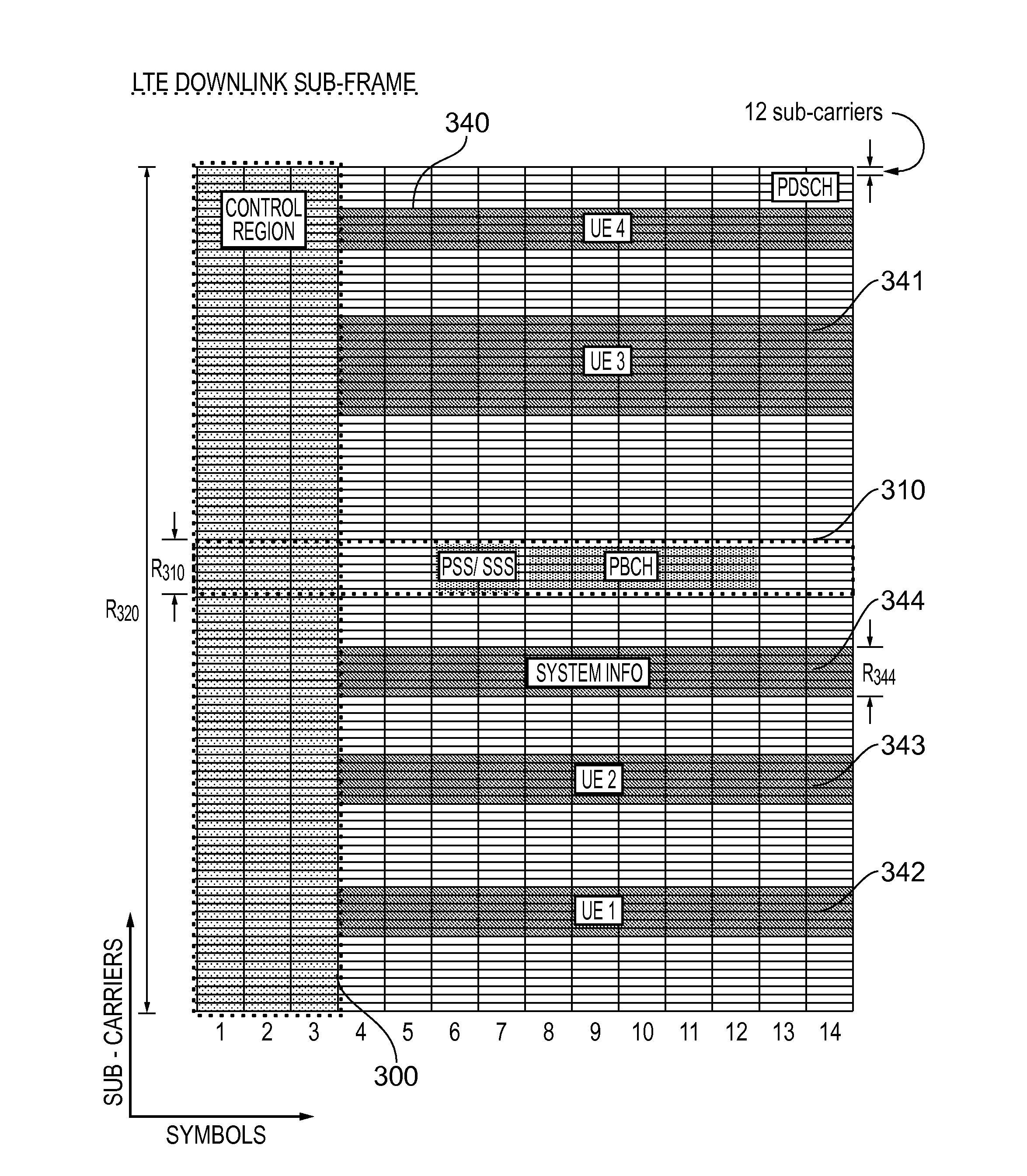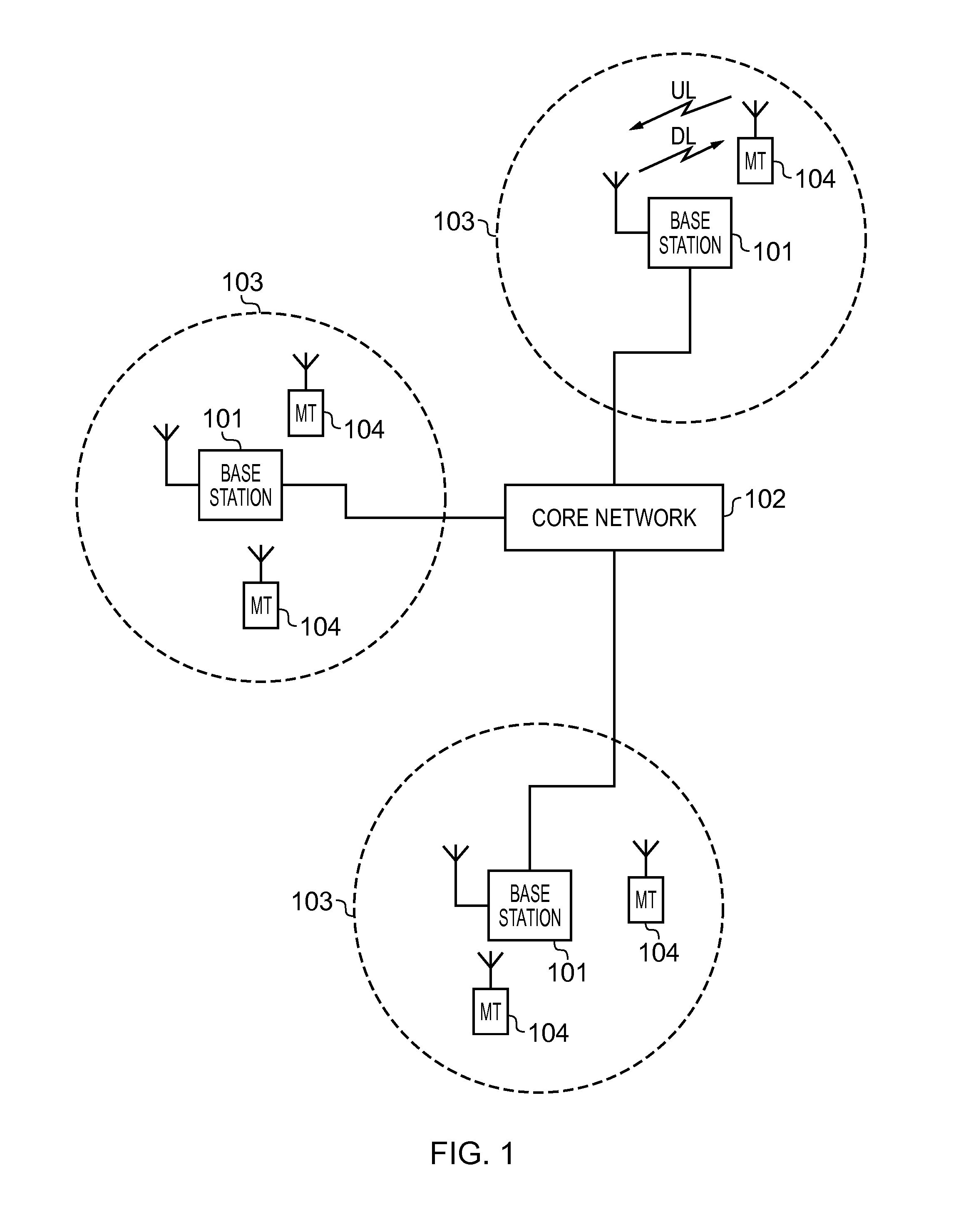Allocating resources and transmitting data in mobile telecommunication systems comprising machine type communication applications
a technology of mobile telecommunications and transmission resources, applied in the direction of wireless communication, transmission path division, wireless communication, etc., can solve the problems of more complex and expensive radio transmission devices to implement, and achieve the effect of reducing interference and reducing interferen
- Summary
- Abstract
- Description
- Claims
- Application Information
AI Technical Summary
Benefits of technology
Problems solved by technology
Method used
Image
Examples
example architecture
[0136]FIG. 14 provides a schematic diagram showing part of an adapted LTE mobile telecommunication system arranged in accordance with an example of the present invention. The system includes an adapted enhanced Node B (eNB) 1401 connected to a core network 1408 which communicates data to a plurality of conventional LTE terminals 1402 and reduced capability terminals 1403 within a coverage area (cell) 1404. Each of the reduced capability terminals 1403 has a transceiver unit 1405 which includes a receiver unit capable of receiving data across a reduced bandwidth and a transmitter unit capable of transmitting data across a reduced bandwidth when compared with the capabilities of the transceiver units 1406 included in the conventional LTE terminals 1402.
[0137]The adapted eNB 1401 is arranged to transmit downlink data using a sub-frame structure that includes a virtual carrier as described with reference to FIG. 5 and to receive uplink data using a sub-frame structure as described with ...
PUM
 Login to View More
Login to View More Abstract
Description
Claims
Application Information
 Login to View More
Login to View More - R&D
- Intellectual Property
- Life Sciences
- Materials
- Tech Scout
- Unparalleled Data Quality
- Higher Quality Content
- 60% Fewer Hallucinations
Browse by: Latest US Patents, China's latest patents, Technical Efficacy Thesaurus, Application Domain, Technology Topic, Popular Technical Reports.
© 2025 PatSnap. All rights reserved.Legal|Privacy policy|Modern Slavery Act Transparency Statement|Sitemap|About US| Contact US: help@patsnap.com



